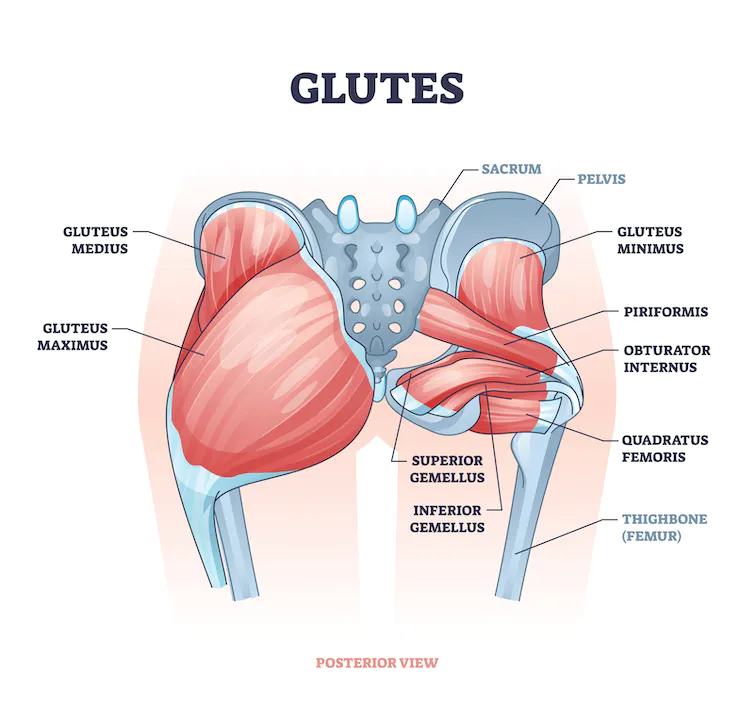The gluteals are the large, powerful muscles in your bum that help support the pelvis, stabilise the hip joint and allow the hip to move.
Most people care about how they look, but we should care more about what they do? Having strong bum muscles is crucial to good musculoskeletal health.
Hold your body up and protect the hip joint
The gluteal muscles are a group of three separate muscles, each with unique anatomical structure and function.

The deepest and smallest muscle is called the gluteus minimus, which is very close to the hip joint itself. Overlaying gluteus minimus is the gluteus medius. This one is relatively large and spans the whole outer surface of the pelvis. The gluteus maximus is the largest of the three gluteal muscles and overlays both gluteus medius and minimus. This muscle is what gives the bum its distinctive curved shape.
In combination, the gluteus maximus, medius and minimus gives rise to many hip movements, and provide shock absorption when you’re walking or running. These muscles work together to hold your body up as gravity tries to pull it down. They also protect the hip joint from impact and from shearing forces that might cause long term damage.
Some people with hip pain also have impairments in the gluteal muscles. These impairments could reduce the bum muscles’ ability to protect the joint against long term damage and potentially affect a person’s ability to bear weight (for example, when standing on one leg or climbing stairs).
Strong glutes have also been shown to improve your day-to-day function, especially in those with hip osteoarthritis. In particular, people with hip osteoarthritis who have stronger glutes walk faster and longer distances and climb stairs faster than those with weaker glutes.
Should I do bum exercises?
Ultimately, better bum muscle function is likely to be helpful because having weak glutes is associated with:
- low back pain
- patellofemoral pain (pain under the knee cap) and
- greater trochanteric pain syndrome (the common type of hip pain we mentioned earlier, also known as gluteal tendinopathy).
Glute strength may even have a role to play in keeping your pelvic floor in good shape (although further research is required).
That’s not to say doing your bum exercises will automatically cure all these ailments; each case is unique and involves a range of factors. But having strong glutes is, in general, very important for hip and pelvis stability and function.
There a number of ways to strengthen the gluteal muscles, but the simplest, most functional and most effective is simple squats. In standing just lower your bum to floor like you are about to do a poo in the forest. Stand up. Repeat.
Glute force: why big, strong bum muscles matter for your overall health (theconversation.com)
